Much attention has been paid recently to the potential for generative AI to disrupt labour markets in the long term, rendering certain professions redundant whilst enhancing the productivity of human labour in others. However, relatively little attention has been paid to the impact AI has already had on the labour market. This column investigates the effect of generative AI models on affected professions, using data from an online labour platform showing that AI has diminished the potential earnings of exposed writers and image-related professionals across skills distribution.
From its nascent stages, beginning in the 1950s, artificial intelligence (AI) has evolved through distinct phases, experiencing notable advancements in the 21st century with the proliferation of machine learning, neural networks, and deep learning. These innovations expanded AI’s footprint, embedding it within various aspects of modern life, including communication, healthcare, transportation, finance, and entertainment. Currently, AI stands at the forefront of technological progress, shaping routines and augmenting human capabilities. Recent developments and the rapid adoption of generative AI models have dramatically improved performance over previous versions, with the potential for far-ranging economic and societal effects.
Historically, AI discussions have often centered on generative statistical models which, compared to descriptive models, require much more data and computing power to support reliable inferences. However, the landscape has shifted with the advent of enhanced computational power and unprecedented volumes of data. This evolution has propelled generative models to achieve remarkable outcomes (e.g. Charness et al. 2023). For instance, models like generative adversarial networks (GANs) have demonstrated groundbreaking capabilities in generating realistic data, images, and even text in specific contexts like pattern shifting and machine translation.
One of the most recent image-based generative AI models, Midjourney, made an immediate impression on the general audience through its remarkable achievements. Midjourney produces pictures with textual and graphic inputs with various styles. Its capacity to generate astounding results in various creative domains is undeniable. What sets Midjourney apart is its ability to deliver exceptional outcomes. Its impact, though powerful, appears to be contained within a particular horizon, operating within defined boundaries that respect the creative prowess and input of human content creators. This nuanced approach strikes a delicate balance, showcasing the potential for AI augmentation without overshadowing or displacing the human creative process, positioning Midjourney as a complementary tool in the creative realm but a potential threat for graphic engineers.
Most recently, ChatGPT, a large language model (LLM) launched by OpenAI, has drawn even more attention given its generality. ChatGPT enables human-machine interaction in the way of dialogue in natural language. In addition to small talk and knowledge provision, ChatGPT and its variant GPT-based models appear to have the power to be rational and are used to assist academic research. Terrance Tao, a Field’s Medal, posted multiple tweets and blogs to praise GPT for helping him in mathematical research. However, a leading scholar in AI, Yann LeCun, is pessimistic about LLMs because of potential misinformation. Nonetheless, ChatGPT continuously attracts more user and attention, and generate externality even for attention of AI. Figure 1 shows Google Trends of AI, GPT, and Midjourney & Dall-E 2. There is a clear increasing pattern after November 2022, and ChatGPT adoption also has visible spillover to the general AI. In contrast, the release of Midjourney and Dall-E 2 received less general attention and was concentrated in a narrower set of subfields.
Figure 1 Descriptive evidence on interest in ChatGPT over time

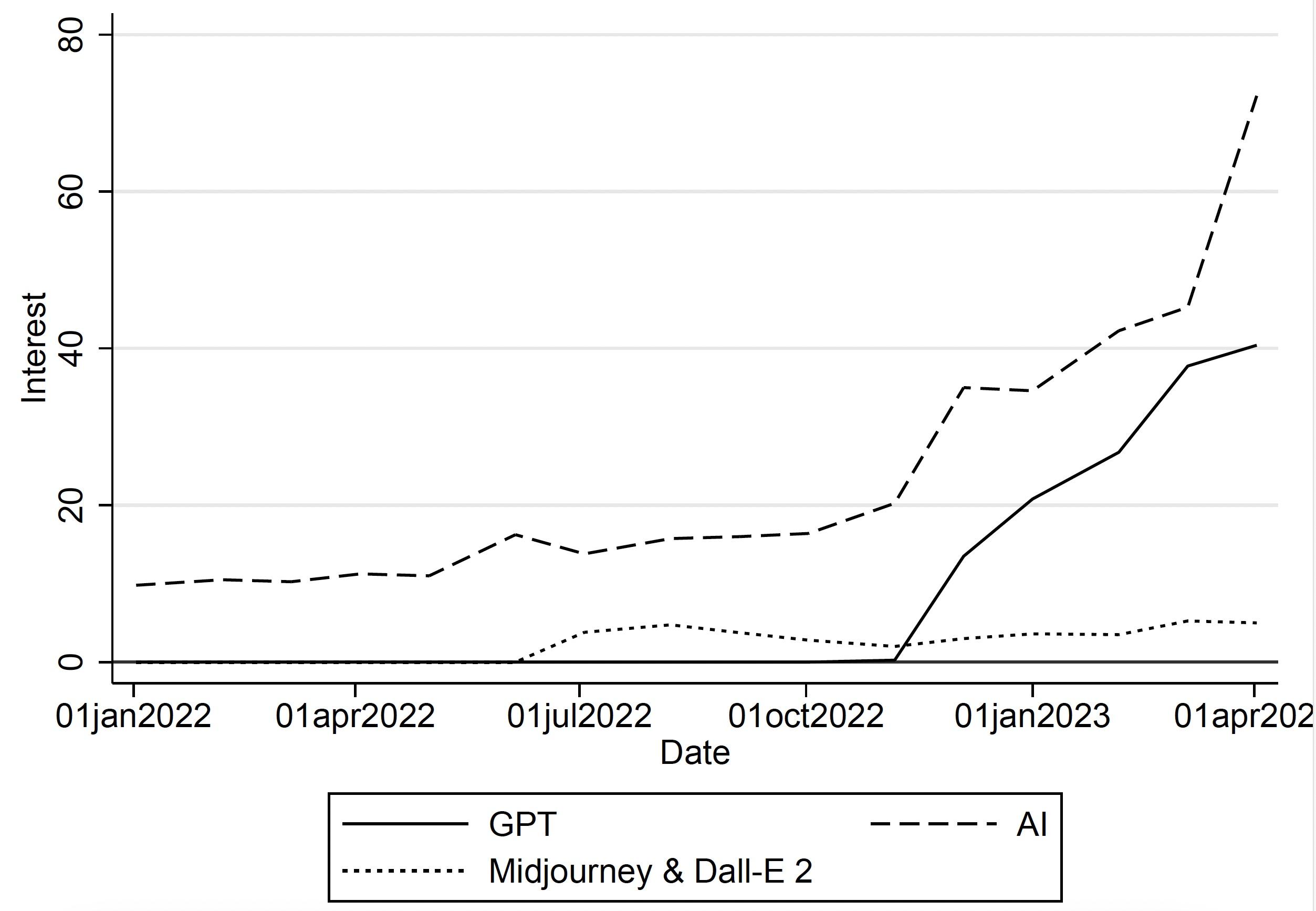
Effects of AI on labour markets
A central question organisations face is whether, over time, AI technologies will substitute workers by fully replacing human input or complement workers by augmenting human labours(Choudhury et al. 2020, Noy and Zhang 2023). This issue has led to a vigorous discussion among policymakers and industry leaders regarding the potential promises and perils of generative AI. On the one hand, AI can complement human workers by increasing their productivity (Choudhury et al. 2020, Noy and Zhang 2023); on the other hand, it may substitute workers, leading to mass layoffs and unemployment (Acemoglu and Autor 2011, Brynjolfsson et al. 2018a, Agrawal et al. 2019). The introduction of AI into organisations may also differentially affect workers of different abilities and expertise (Lebovitz et al. 2022, Allen and Choudhury 2022, Acemoglu et al. 2021). It may ultimately alter the composition of workers in the labour market by either exacerbating or mitigating wage inequality within and across occupations.
While a few current papers (e.g. Eleundou et al. 2023 and Felten et al. 2023) provide predictions on the future implications of generative AI on different tasks and occupations, the current effects of generative AI have remained largely explored. It is crucial to understand short-term implications and predict long-term consequences of generative AI in human resources before addressing relevant concerns in incoming policies.
Our study
In our recent study (Hui et al. 2023), we provide empirical evidence on the short-term effects of generative AI on employment. Specifically, we investigate the introduction of ChaptGPT in November 2022, and the release of DALL- E 2 and Midjourney in April 2022. Our empirical setting is Upwork, one of the largest online labour markets in the world. Upwork is a great setting to study the short-term effect due to the flexibility of employment on the in this spot market, compared to the contractual rigidity of traditional labour markets.
Using data from Upwork, we use a difference-in-differences research design to study the differential change in employment outcomes between freelancers in occupations that are more heavily affected by the introduction of generative AI and those in less affected occupations. In the case of ChatGPT, we use writing-related jobs as the main affected occupations, given previous research findings in Eleundou et al. (2023), anecdotal evidence, and the specific attributes of ChatGPT as an LLM designed for text prediction and generation. For image-based AI models, the treatment group contains freelancers offering services in design, images, and art.
We find that ChatGPT has a substantial adverse effect on workers’ employment outcomes. In writing-related occupations, freelancers experience a decrease of 2% in the number of monthly jobs and a decrease of 5.2% in monthly earnings on the platform. Figure 2 visualises the difference in employment outcomes (y-axis) from writing-based jobs and all others along with time (x-axis) after controlling for freelancer-level characteristics including past income level, number of jobs taken, and ratings from previous employers. This story is also true for the extensive margin: freelancers are 1.2% less likely to receive any job in each month, and conditional on employment freelancers take 4.7% less jobs.
For image-based generative AI (namely, DALL – E2 and Midjourney), we observe qualitatively similar effects in both the number of jobs (a reduction of 2.1%) and total earnings (a reduction of 5.2%). The similar effects obtained from the release of another generative AI at a different time and on another set of workers speaks to generalisability as well as the validity of our design.
Figure 2 The effect of text-based generative AI on freelancers’ employment on the platform
A) Monthly number of jobs
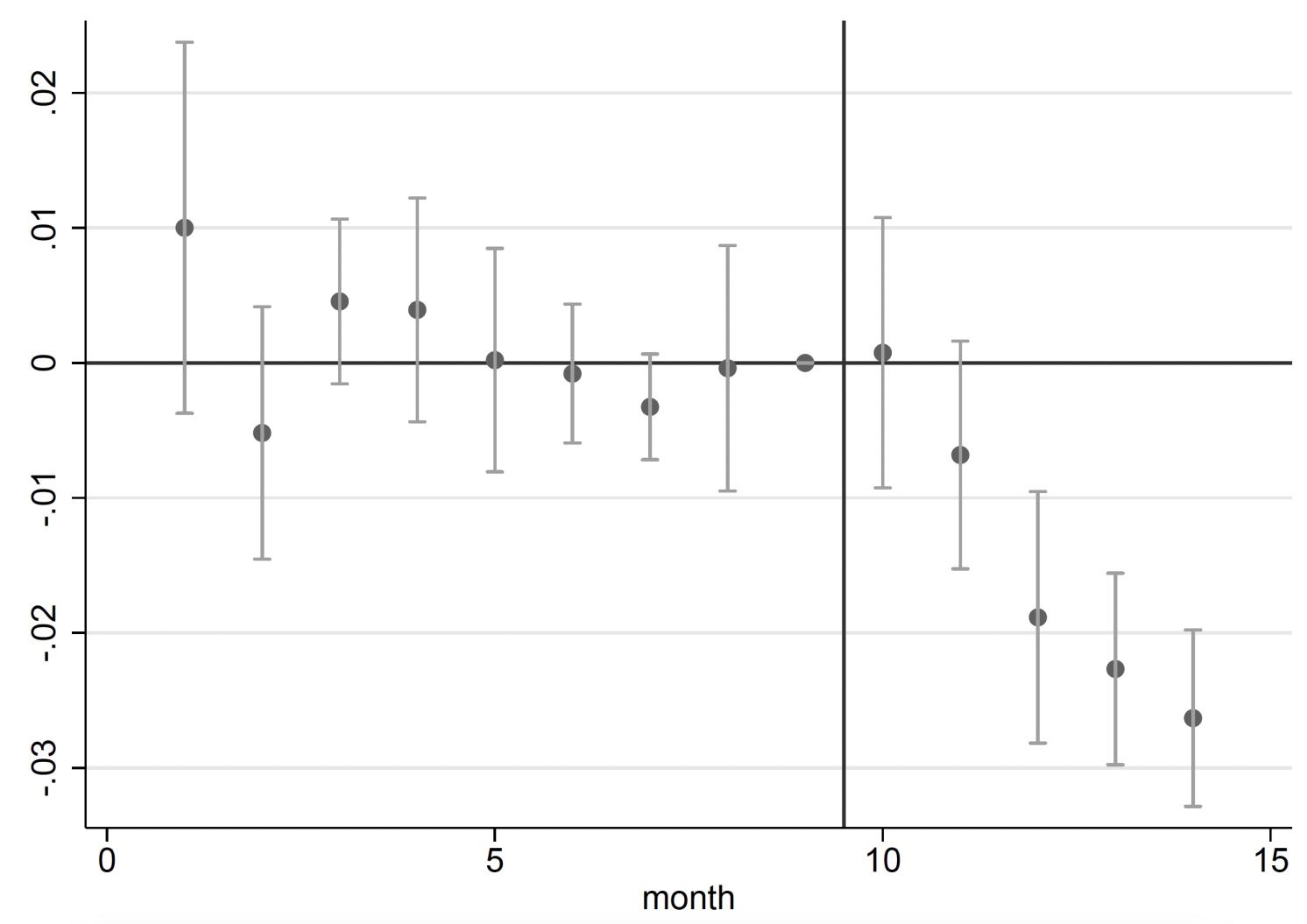
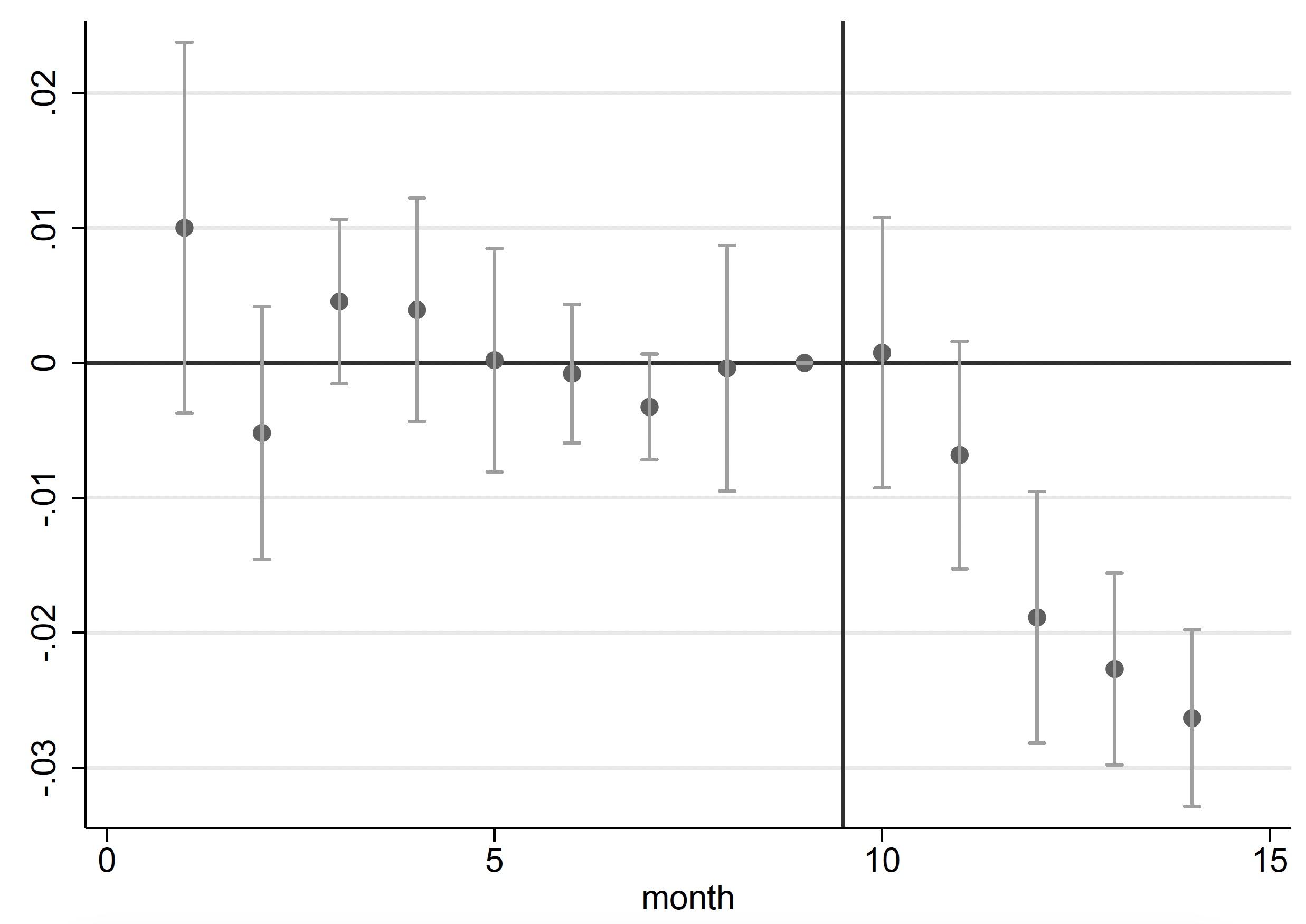
B) Monthly revenue
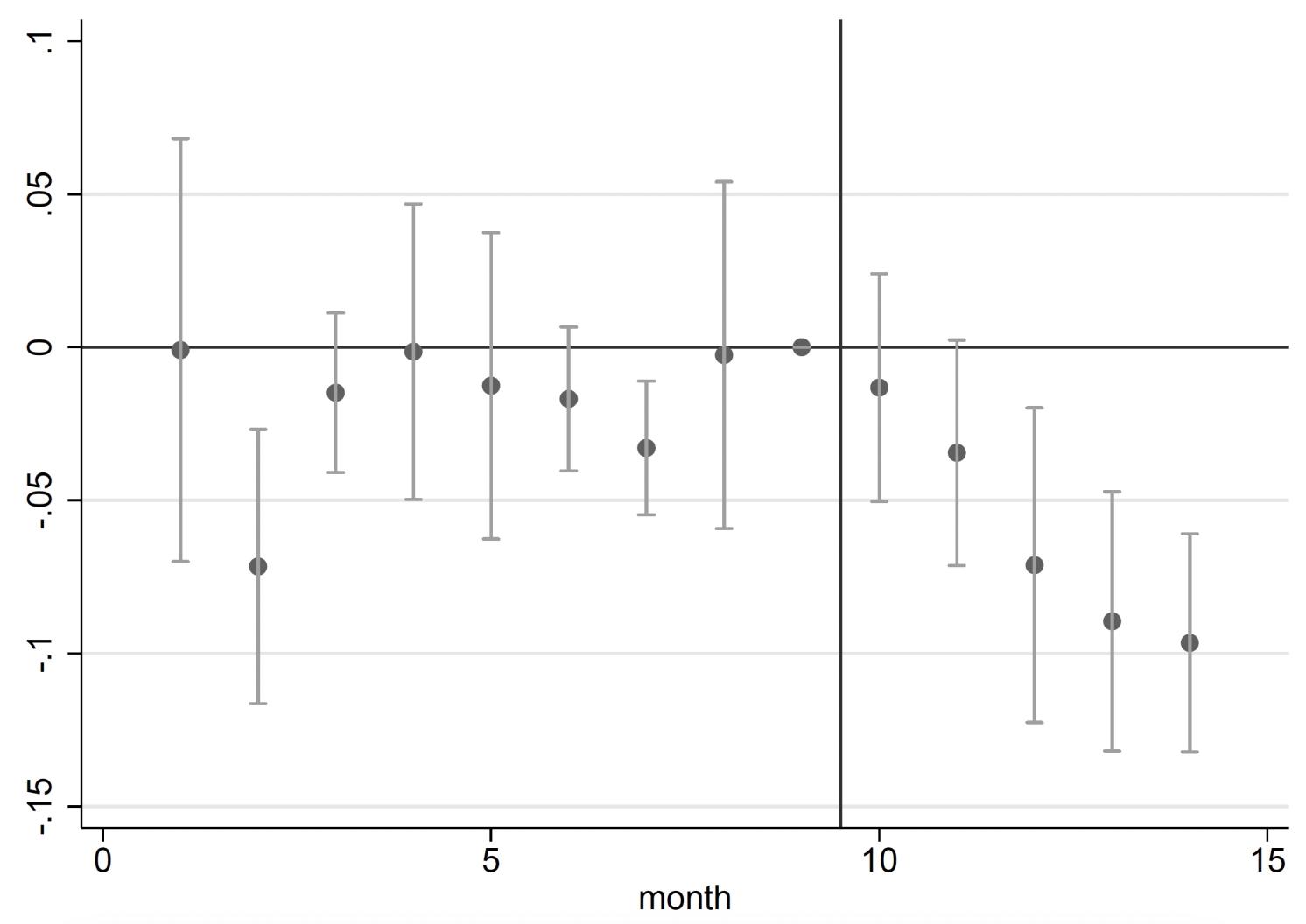
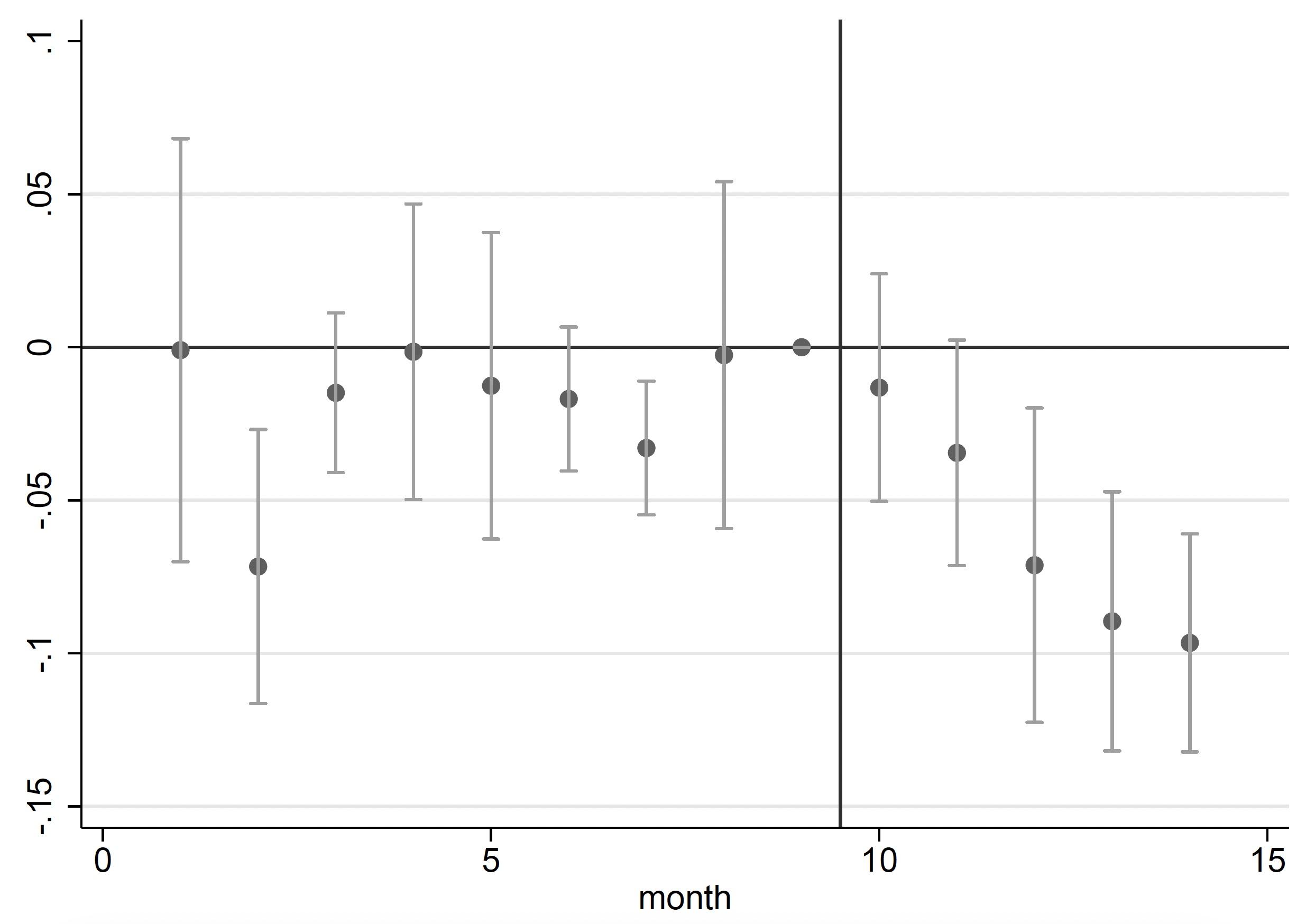
The effect of worker quality
Next, we study whether the effect on employment outcomes differs by freelancers’ quality. We use several measures of freelancers’ quality, including their past employment and earnings, the skill level necessitated by past jobs, past performance, and hourly rate. We do not find evidence that being high-quality moderates the adverse effects of generative AI on a freelancer’s employment outcomes across the board. If anything, evidence suggests that high-quality workers being disproportionately affected by the release of generative AI models.
These findings suggest that generative AI models act as a substitute for workers of all quality types, reducing their employment and earnings. The heterogeneous treatment effects are consistent with generative AI potentially reducing the productivity gap between low-quality and high-quality workers, leveling the playing field across workers.
Policy implications
Our results have several implications for policymakers and managers. They suggest that employers are better positioned than workers to capture the value generated by rapid AI advancement, as the new technology starts to replace human labour across the skills distribution. While in our paper we study the short-term effects of generative AI, we speculate that the substitution between technological capital and labour could be even more pronounced in the long run. Since we wrote the paper, there has been tremendous progress in generative AI (e.g. GPT 4.0) and many new innovations based on GPT. As the technology continues to evolve, it has the potential to further amplify the dynamics between labour and technology.
Source : VOXeu



































































